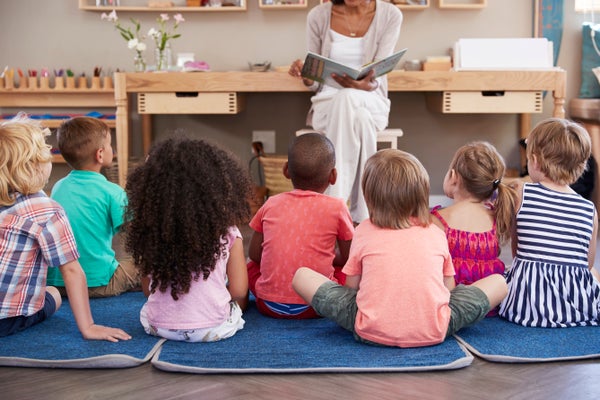Children's literature has become far more diverse in the past decade, helping more kids than ever to see themselves in their favorite books. Of the thousands of kids' and teens' books reviewed in a 2022 analysis, about 45 percent had a nonwhite author, illustrator or compiler, up from 8 percent in 2014. “There are just so many more choices of books [reflecting] the multifaceted complexity of individual lives,” says Tessa Michaelson Schmidt, director of the Cooperative Children's Book Center at the University of Wisconsin–Madison.
But white males remain overrepresented in the most influential children's stories, the authors of a recent study concluded. The research, published in the Quarterly Journal of Economics, examined the winners and honorees of the Newbery and Caldecott medals—widely considered the most prestigious prizes in kids' literature—and the recipients of 17 awards for diversity. University of Chicago social scientist Anjali Adukia and her colleagues scanned 1,130 of these award-winning books, covering more than 162,000 pages, and used an artificial-intelligence program trained to detect faces and determine the age, race and gender of each pictured character.
Machine learning let the researchers pick up on details they may have missed if they had combed through the books by hand. For example, on average, youngsters were depicted with lighter skin than adults of the same race. And female characters appeared more often in images than in text, which “suggests more symbolic inclusion ... rather than substantive inclusion,” according to the study's authors. They also found that the vast majority of famous people mentioned in Newbery- and Caldecott-winning books are white.
On supporting science journalism
If you're enjoying this article, consider supporting our award-winning journalism by subscribing. By purchasing a subscription you are helping to ensure the future of impactful stories about the discoveries and ideas shaping our world today.
The results come amid a nationwide cultural clash, with diversity campaigns running alongside attempts to ban books that address aspects of race and sexual identity. But kids crave exposure to stories about people like them, which build up their feelings of self-worth and help them maintain an interest in reading, says Caroline Tung Richmond, an author of young adult fiction and executive director of the nonprofit organization We Need Diverse Books. At the same time, she says, young people benefit from stories that allow them “to see into a different culture or identity and build empathy.”
.jpg?w=900)
Credit: Amanda Montañez; Source: “What We Teach about Race and Gender: Representation in Images and Text of Chilren’s Books,” by Anjali Adukia et al., in Quarterly Journal of Economics, Vol. 138; 2023 (data)
